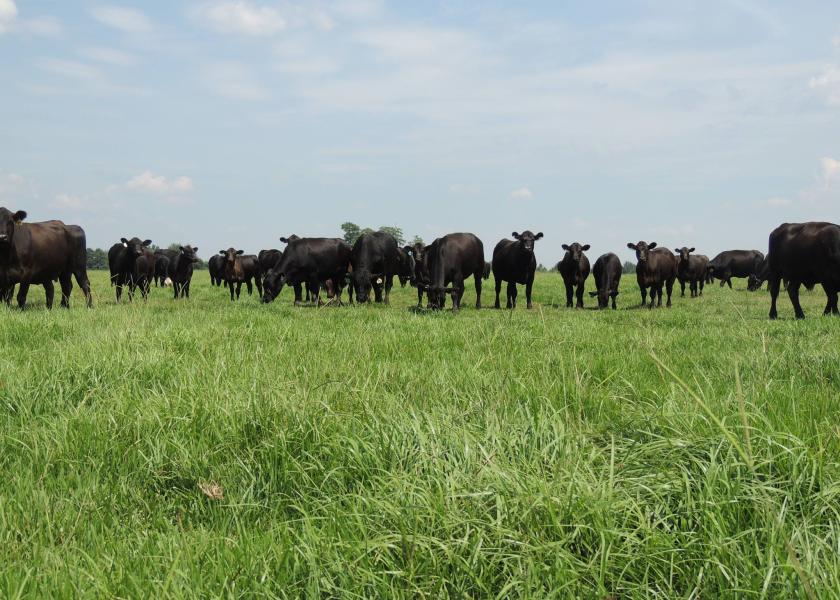Benefits of Cereals for Pastures

Bermudagrass is a common warm-season perennial forage found in southeast Kansas. It can be very productive for summer grazing, however, it has a relatively long period of winter dormancy and is often invaded by annual, weedy species. While these weedy species produce some forage, their production is sporadic and their quality short-lived.
Winter cereal crops such as wheat, rye and triticale produce high-quality forage during the time period that Bermudagrass is dormant. Fall-established cereals can be used to lengthen the grazing season of the pasture. Because of higher utilization, cattle gains from rye interseeded into Bermudagrass are comparable to gains from rye grown in clean-tilled conditions, even though less forage is produced. And, efficiency of land use is nearly doubled when rye is no-till seeded into Bermudagrass sod; compared to growing each crop on separate acres.
Any fall-seeded winter-hardy forage species could be suitable for seeding in Bermudagrass sod. However, the earliest, most productive species would likely produce the most desirable results. Rye and wheat had similar forage yields, but growth was delayed when compared to winter cereals grown alone in clean-tilled conditions. Rye will generally produce the earliest growth. Rye, wheat and triticale have each resulted in satisfactory pasture gains.
The cereal crop must be seeded early enough in the fall for establishment and provide growth for early grazing, but late enough that the Bermudagrass will not compete with cereal crop seedlings for moisture and nutrients. Mid-September is an optimum time in southern Kansas; shorter day length and cooler nights have typically slowed Bermudagrass growth, and the likelihood of fall showers usually enables seedings of cereals to become established. Prior to seeding, the Bermudagrass cover needs to be reduced to no more than a few inches in height.
For consistency in planting, a drill that is suitable for no-till conditions is required. Broadcasting seed on the surface of the sod will rarely produce an acceptable stand. A grain drill designed for tilled seedbeds may produce good stands when soil moisture conditions are best. However, since Bermudagrass is efficient at extracting the limited amount of soil moisture that is typically available in late summer, these sods are usually dry. A heavy no-till drill may be needed to place the seed at the optimal 1-inch depth.
Seeding rates vary by species because of different seed size and establishment rate. Stands ideal for forage production of cereals require 1.5 to 2 times the seeding rate for optimal grain production. When seeded in early September, adequate stands have been obtained by seeding 90 pounds/acre of wheat and 100 pounds/acre of rye or triticale. Later seedings or less favorable conditions may require higher seeding rates.
Bermudagrass is efficient at extracting and immobilizing soil nitrogen (N) as well as soil moisture. Satisfactory production of cereal grains in Bermudagrass sod will, therefore, usually require added N. However, timing of the application is critical so that N is available when the cereal crop needs it. Nitrogen that is applied in the fall when soil temperatures are higher than 50˚F, may be immobilized in Bermudagrass sod. Cereal seedlings will likely suffer some N deficiency in early fall, but N application prior to late fall will likely not benefit them much.
Application of 45 pounds/acre of N in January produced almost as much animal gain as 135 pounds N/acre. Thus, the application of N in excess of what the cereal crop can use, or an amount that produces more forage than the animals can utilize, will not benefit animal gain and may not carry over to be used by the Bermudagrass.
Annual phosphorus and potassium applications should be made to meet Kansas soil test recommendations for Bermudagrass pastures.
Forage produced in this situation typically will be primarily for pasture, with the possibility of harvesting forage that cannot be grazed out. The delayed development makes them unattractive for use as harvested forage and particularly for grain.
Aside from the benefit of putting out less hay, these forage rotations protect wet soils by having more alive and active root systems; enhancing a pasture’s ability to carry hoof traffic. Invasive annual, unwanted species are held back because of the healthy growing cereal forage.
Fall grazing will likely be limited due to competition from the Bermudagrass for moisture and nutrients, which inhibits fall cereal production. Most grazing will occur during a 60-day timeframe beginning in mid-March. During that time, cereals will support a stocking rate similar to the summer carrying capacity of the Bermudagrass and provide a high level of animal performance. This would be especially true if the same cattle are grazed on the Bermudagrass, since they would be smaller at placement on the cereal than when Bermudagrass growth begins. This further simplifies management and allows placement when stocker prices may be lower.







